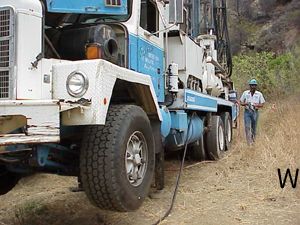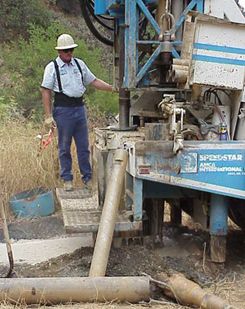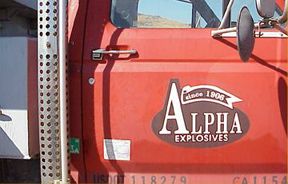
|
The
Los Angeles Seismicity Experiment (
LARSE
)
is a study of the effects of a series of small sub-surface explosions that
will be detonated along a 60-mile line that runs from the Pacific Ocean
across the San Fernando Valley, the San Gabriel Mountains and out into the
Mojave Desert. The sound waves generated by these small blasts are enough
to provide meaningful data to hundreds of portable seismometers, but are
not strong enough to be felt by people or to trigger earthquakes. During
these tests, vibrations called seismic waves radiate out from the small
explosion. The speed of these waves depends on the type of rock they travel
through, as well as the rock's temperature and pressure. When the waves
arrive at distant seismographs, some will have been delayed, depending on
the geologic features they've traveled through. The difference in travel
time allows scientists to create a picture of the structure and composition
of the earth's interior. This process, called tomography, creates a picture
of the earth below which can be used to understand and predict the shifts
in the earth's crust that cause earthquakes. LARSE is a collaboration between
the Southern California Earthquake Center (
SCEC
),
the United States Geological Survey (
USGS
),
and many other organizations.
|

|

|










